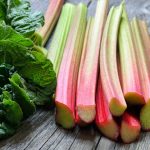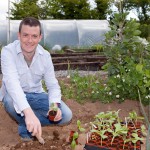EARLIER this year we were at St. Augustine’s College in Dungarvan to mark the launch of our food growing entrepreneurship campaign for secondary schools.
Our GROW 2 CEO campaign, which we’ve developed with the team at Culy & Scully (clearly no slouches when it comes to building a successful food business) is about fostering an interest in food and food entrepreneurship in Irish Schools. We talked about food and food issues with a gathering of around 200 students from First to Fourth year.
There’s an interesting sort of anomaly when it comes to teenagers and food. Just like the rest of society, they are certainly interested in food – far more interested than their peers of ten or twenty years ago at any rate. But as they prepare to leave school and move on to third level or join the workforce, they are not thinking about careers in food. I find that curious, particularly since food is increasingly ‘cool’ for today’s teens. When we asked them how many of them loved their food, every hand in the room went up. But when we asked how many were considering a career in food – growing, producing, cooking, or food entrepreneurship – only one hand went up. OK, so it’s not exactly a scientific experiment, but it shows up the problem that the food industry has in attracting the best and brightest graduates.
There are lots of food programmes aimed at primary schools, but not so much when it comes to secondary. Arguably, this is the more important time for students to be focused on food at school, just as they are about to become consumers in their own right.
While some students have the option to choose home economics, food is still not part of the curriculum in our schools. Of course Maths, Science and English are important subjects. And yes, the universities and US multinationals tell us that fostering an early interest in STEM subjects is ‘critical’.
But let’s be real. When the chips are down, on a basic human needs level, food is far more important than any of these things. It is literally what keeps us alive – and teaching young people how food works can be the difference between a lifetime of wellness or a shortened one plague by chronic ill-health.
For GROW 2 CEO, students pair up to register for a free campaign pack. We will send them a kit and resources to get hem growing their own food in the classroom. Then, we want the students to use their class-grown food to create a brand new soup recipe, name, it, and pitch it to us as a food business of the future.
The competition takes place over six weeks next spring and comprises four business challenges with some amazing prizes up for offer. In the spirit of the times, the winners will be chosen following a Dragon’s Den style pitch where ominous looking judges will judge their idea.
Two remarkable young ladies from St. Augustine’s, Mary Ellen Kelly and Roísín Kiely (mentored by their teacher Margo McGann), won the inaugural programme this year. They developed a new pea and nettle soup brand, using their home-grown peas and foraged nettles from the Deise Greenway as core ingredients.
Their branding was top notch and they even came up with an idea for an on-pack temperature sensor which changes colour when the soup is hot enough to eat. They developed a short video, which was a master-class in social media promotion – short, fun and smart as a whip (with Olympian Thomas Barr roped in to help it go vital). And of course, the soup was delicious (see recipe below).
Entry to GROW 2 CEO is free, but packs are limited – sign up now by going to cullyandsuly.com/ourgarden.
The Basics – Dividing rhubarb
YOU can and should divide rhubarb plants every four or five years to give the plants more room and reinvigorate them. The best time to do this work is when the plant is dormant, so November to February will work. 
Dig the rhubarb using a fork to lever the crown carefully from the soil, trying to avoid as much as possible damage to the roots. Once you have it out of the ground remove any rotting sections from the plant and give it a general clean up. Then using a sharp spade, press down heavily and divide the crown in three. Ideally you want each section to have a crown, a large amount of root and at least four or five pink buds. Then dig a hole for the divided crowns and place one crown in each, roots downwards, with the top of the crown roughly an inch below the soil surface. You can pop some well rotted manure or compost in to the hole first if you want to add some nutrients. Backfill with soil, firming in gently. New plants should not be harvested too heavily in the first year. Of course if you don’t want more rhubarb plants, you can bring the new plants along to your local GIY meetings and share the largesse with other GIYers!
Recipe of the Week
Mary Ellen and Róisín’s Pea and Nettle Soup
Ingredients:
50g butter
2 small onions
1 clove garlic, mashed
handful of nettles
1 litre of chicken stock
500 g peas
1 tbsp of chopped parsley
pea shoots to decorate
Method:
Melt the butter in a saucepan and add the garlic
Add the onion and sweat on a gentle heat until soft but not coloured, about 5-6 minutes.
Add the hot stock and bring to the boil, then add the peas.
Season well with salt and pepper. Cook for a further five minutes.
Add the nettles and parsley then whizz in a food processor.
Taste and correct the seasoning.
Swirl with a little cream if you like.
Decorate with pea shoots and some chive flowers if available.





